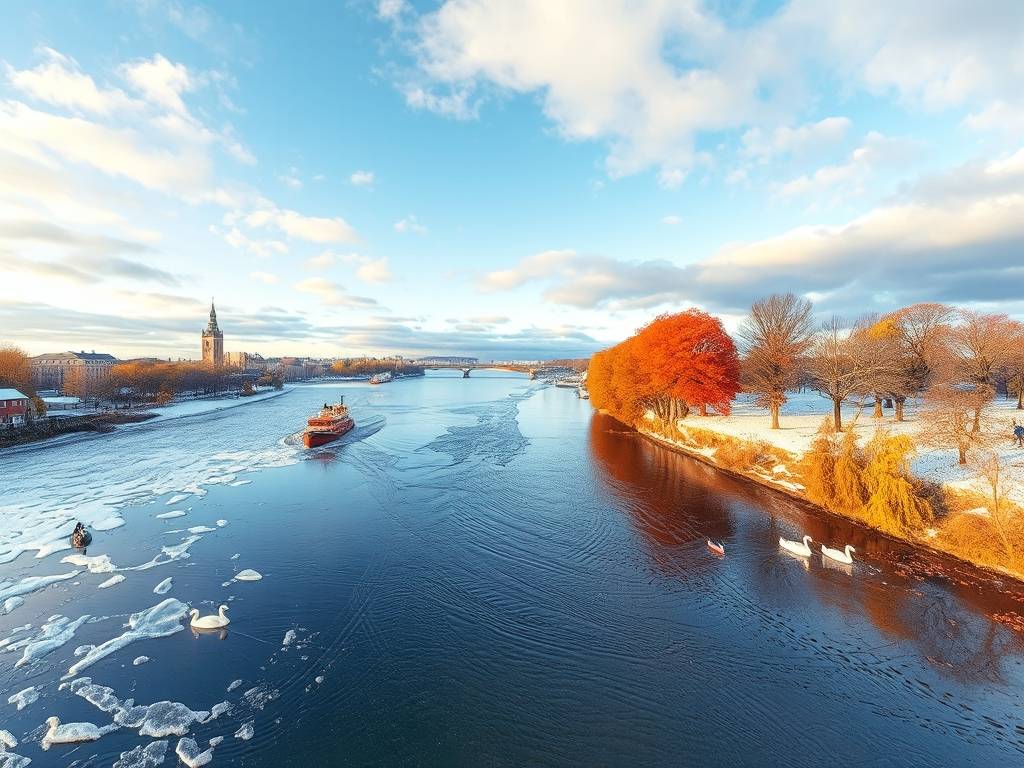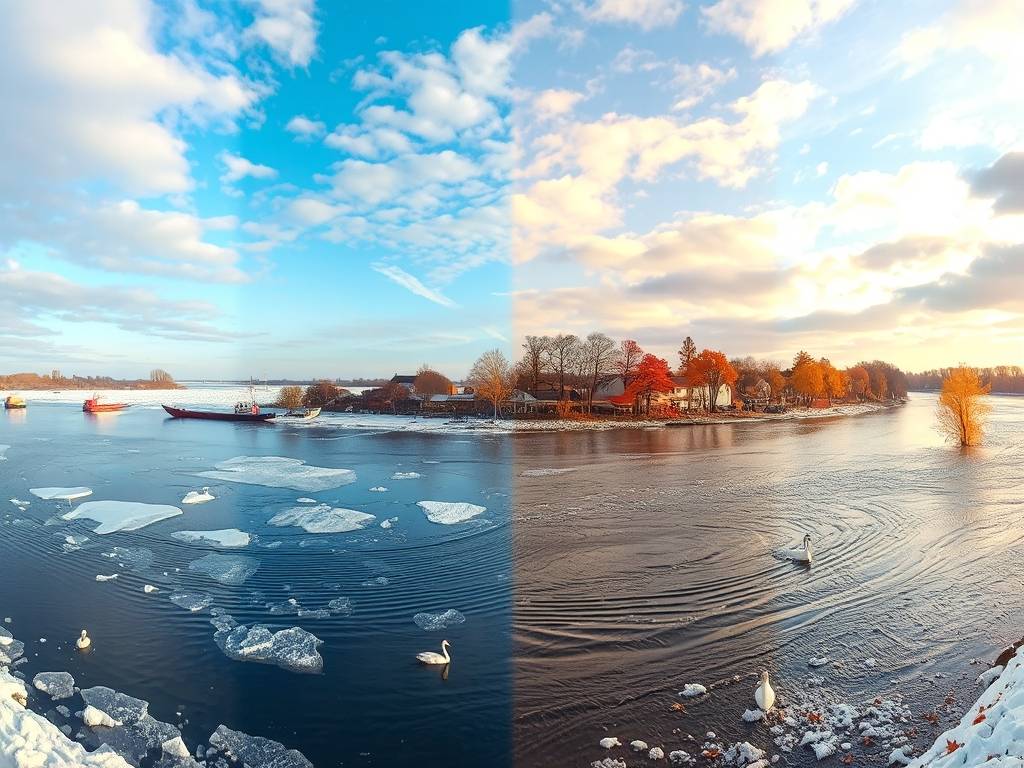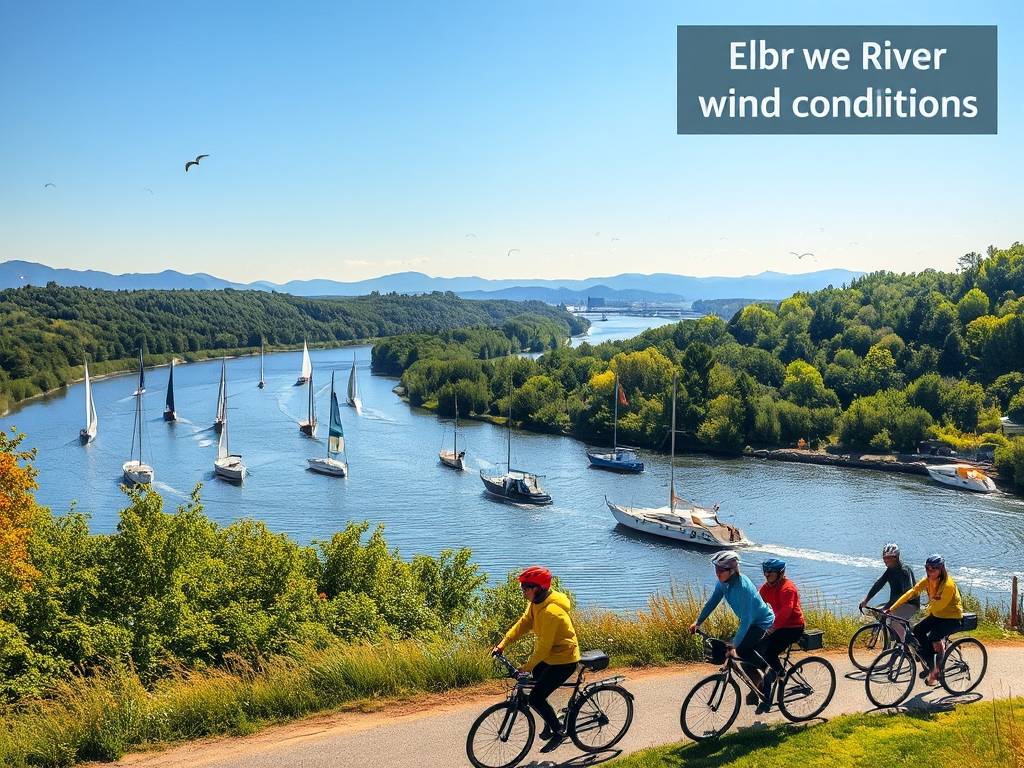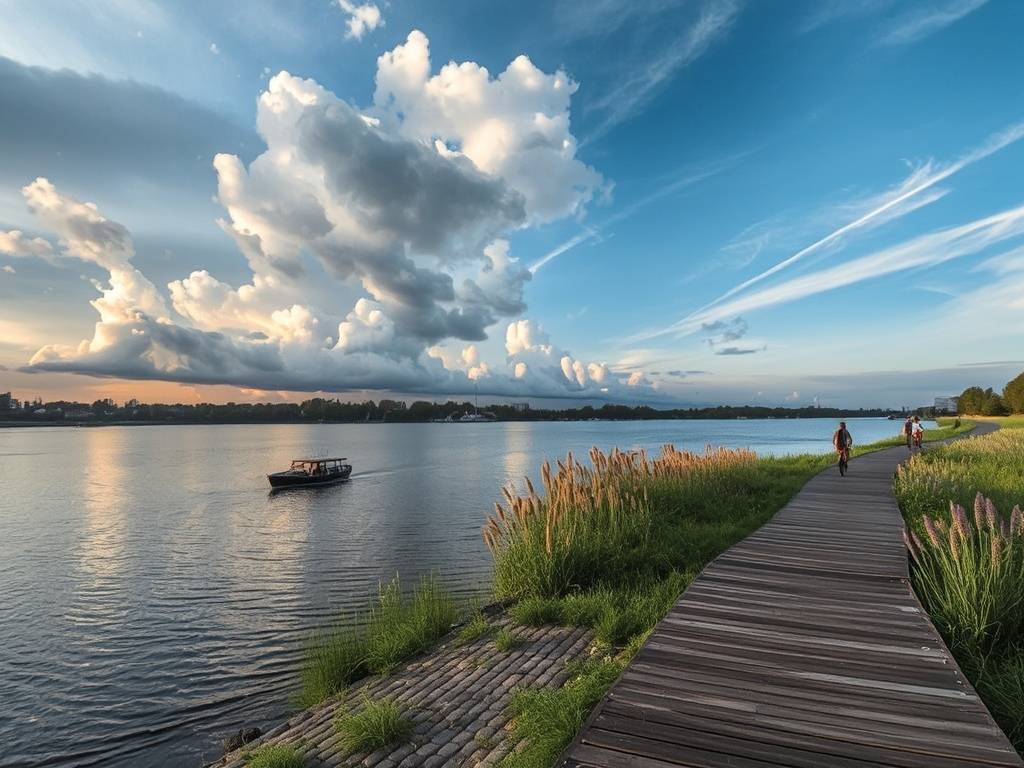Global Travel Information
Elbe River Climate Information: Average Temperatures Year-Round
The Pulse of the Elbe: A Journey Through Its Year-Round Climate
The Elbe River is more than just a waterway; it's the lifeblood of Central Europe, a shimmering thread weaving through the heart of Germany and the Czech Republic, telling a story that changes with every season. For the traveler planning a river cruise, the cyclist embarking on the Elbe Cycle Path, or the curious mind simply drawn to its historic banks, one question is paramount: what is the weather like? Understanding the Elbe River's climate is the key to unlocking a perfect experience. This comprehensive guide will walk you through the average temperatures and unique atmospheric moods of the Elbe River region, month by month, ensuring you know exactly what to expect from its temperate, yet distinctly seasonal, character.
The Big Picture: A Temperate Continental Climate

Before we dive into the monthly details, it's crucial to grasp the overarching climate pattern. The Elbe River basin experiences a temperate seasonal climate, with clear distinctions between spring, summer, autumn, and winter. However, it's not uniform from source to mouth. The upper reaches, closer to the Czech Republic, lean towards a more continental influence, meaning warmer summers and colder winters. As the river flows northwest towards Hamburg and Cuxhaven, the climate becomes more moderated by maritime influences from the North Sea, leading to milder winters and slightly cooler summers. This gradient is subtle but noticeable and plays a significant role in planning your Elbe River travel itinerary.
Spring (March - May): The Awakening
Spring along the Elbe is a season of transformation, a time when the landscape shakes off its winter slumber in a vibrant burst of life. This period is characterized by rapidly rising temperatures and increasing daylight, but it can also be unpredictable.
- March: Early spring is still cool and can feel like a continuation of winter. Average daytime temperatures in Dresden and Prague might hover around a crisp 8°C (46°F), while nights can still dip below freezing. It's a quiet time for tourism, offering a stark, beautiful perspective of the castles and vineyards without the crowds. Packing layers is essential for a spring Elbe Valley visit.
- April: This is the true turning point. By mid-April, the Elbe River valley average temperatures become noticeably milder, reaching pleasant highs of 14-15°C (57-59°F). The famous Saxon and Bohemian Switzerland national parks begin to bloom, and the air is fresh and invigorating. However, April is known for its variability – a sunny, warm day can be followed by a chilly, rainy one. This is a fantastic time for photographers seeking dramatic skies.
- May: May is arguably one of the most beautiful months to witness the best time to visit the Elbe River region. The landscape is lush and green, with daytime temperatures comfortably sitting between 18-20°C (64-68°F). The risk of frost is gone, and the outdoor café culture in cities like Meissen and Wittenberg comes to life. It's perfect for hiking and cycling before the peak summer heat and crowds arrive.
Summer (June - August): The Vibrant Peak
Summer is the high season for a reason. The weather is generally warm and inviting, making it ideal for all kinds of activities, especially the world-renowned Elbe River cruise season.
- June: The beginning of summer is delightful. With average summer temperatures on the Elbe starting around 22-24°C (72-75°F), it's warm without being oppressive. The days are long, with sunlight lingering until late in the evening. This is a prime month for enjoying the Elbe River water levels for boating, which are typically stable after the spring snowmelt.
- July: This is the warmest month of the year. In the more continental inland areas, daytime highs in Prague and Dresden can regularly reach 24-26°C (75-79°F), with occasional heatwaves pushing temperatures into the low 30s°C (high 80s°F). The atmosphere is lively, and the river is bustling with cruise ships and pleasure boats. While generally sunny, summer thunderstorms can occur, often providing a dramatic and refreshing break from the heat.
- August: Similar to July, August maintains the warm summer conditions, though you might begin to feel a slight hint of the approaching autumn by the end of the month. It remains an excellent time for swimming in the river's designated areas and enjoying open-air festivals. Understanding the Elbe River basin weather patterns helps in anticipating these brief, intense downpours.
Autumn (September - November): A Tapestry of Color
If you're a fan of dramatic scenery and comfortable weather, autumn is a strong contender for the best time to visit the Elbe River region. The crowds thin out, and the landscape is set ablaze with brilliant hues of red, orange, and gold.

- September: Early autumn is magnificent. The heat of summer has mellowed into a pleasant, mild warmth, with average daytime temperatures around 18-20°C (64-68°F). The skies are often a deep, clear blue, and the light is soft and golden, making it a photographer's dream. The grape harvest in the Saxony wine region begins, offering a unique cultural experience. It's a perfect window for the Elbe Cycle Path climate conditions.
- October: This is a month of rapid change. Temperatures drop more noticeably, with averages falling to 12-14°C (54-57°F). The mornings are crisp, and the air feels fresh. This is when the Elbe River valley average temperatures truly signal the shift in seasons. Fog often blankets the river in the early mornings, creating ethereal, picturesque scenes, especially around the historic towns.
- November: Late autumn is cool, damp, and quiet. Average temperatures in Dresden and other cities drop to around 5-7°C (41-45°F), and the first frosts are common. The last of the leaves fall, and the region prepares for winter. While not ideal for cycling or cruising, it offers a moody, contemplative atmosphere for those interested in museums and cozy indoor pursuits.
Winter (December - February): The Silent Season
Winter casts a serene, frosty spell over the Elbe. This season is defined by cold temperatures and short days, but it possesses a stark, magical beauty all its own.
- December: The beginning of winter is often grey and damp. Daytime highs struggle to get above 3-4°C (37-39°F), and nights are consistently below freezing. While snowfall in the cities is not always guaranteed, it becomes more frequent in the higher elevations of the Erzgebirge and Bohemian Switzerland. The world-famous Christmas markets in cities like Dresden and Hamburg provide a warm, festive counterpoint to the chilly weather, making December a uniquely charming time to visit.
- January: This is the coldest month. The average winter temperatures along the Elbe can sit at a frigid 0 to 2°C (32-36°F) during the day, with nights often plunging to -5°C (23°F) or lower. When snow falls, it transforms the riverbanks and castles into a storybook scene. However, the Elbe River water levels for boating are at their lowest, and most cruise operations are halted.
- February: The deep cold of January persists through much of February, though the slowly lengthening days offer a promise of the spring to come. It remains a quiet and peaceful time, ideal for those seeking solitude and the crisp, clear winter air.
Beyond Temperature: Other Climatic Factors
A complete Elbe River climate guide must look beyond the thermometer. Precipitation is fairly evenly distributed throughout the year, though summer months can see slightly more due to thunderstorms. The river's water level is a critical factor, heavily influenced by snowmelt in spring and rainfall. Periods of drought in summer or frozen conditions in winter can impact navigation. Wind is another element, particularly in the northern, flatter stretches near the North Sea, where it can be a constant companion for cyclists.
Packing for the Elbe's Moods
Your packing list should be as versatile as the climate itself. The golden rule for any season, but especially for the shoulder seasons, is to pack layers. A waterproof and windproof jacket is a year-round essential. In summer, include light clothing but also a sweater for cooler evenings. For spring and autumn, warm sweaters and a medium-weight coat are necessary. Winter demands a heavy coat, insulated boots, a hat, scarf, and gloves.
In conclusion, the climate of the Elbe River is a dynamic and integral part of its charm. There is no single "bad" time to visit—only different experiences. Whether you're drawn to the vibrant energy of a sunny summer day, the breathtaking palette of an autumn vineyard, the fresh bloom of a spring meadow, or the silent majesty of a winter castle, understanding the year-round weather on the Elbe equips you to choose the adventure that speaks to your soul. By aligning your expectations with the river's natural rhythm, your journey along this historic waterway will be nothing short of unforgettable.
相关文章
- Elbe River Educational Programs: Learn About Ecology
- Elbe River School Trips: Educational Excursions for Students
- Elbe River Science Tours: Explore the River’s Ecosystem
- Elbe River Weather Forecast: Plan Your Day Along the Water
- Elbe River Wind Conditions: Tips for Boaters & Cyclists
- Elbe River Rain Gear: Stay Dry During Your Visit
- Elbe River Sun Protection: Stay Safe in the Summer
- Elbe River Winter Clothing: What to Wear in Cold Weather
- Elbe River Packing List: Essentials for Your Trip
- Elbe River Luggage Storage: Where to Store Bags
发表评论
评论列表
- 这篇文章还没有收到评论,赶紧来抢沙发吧~


